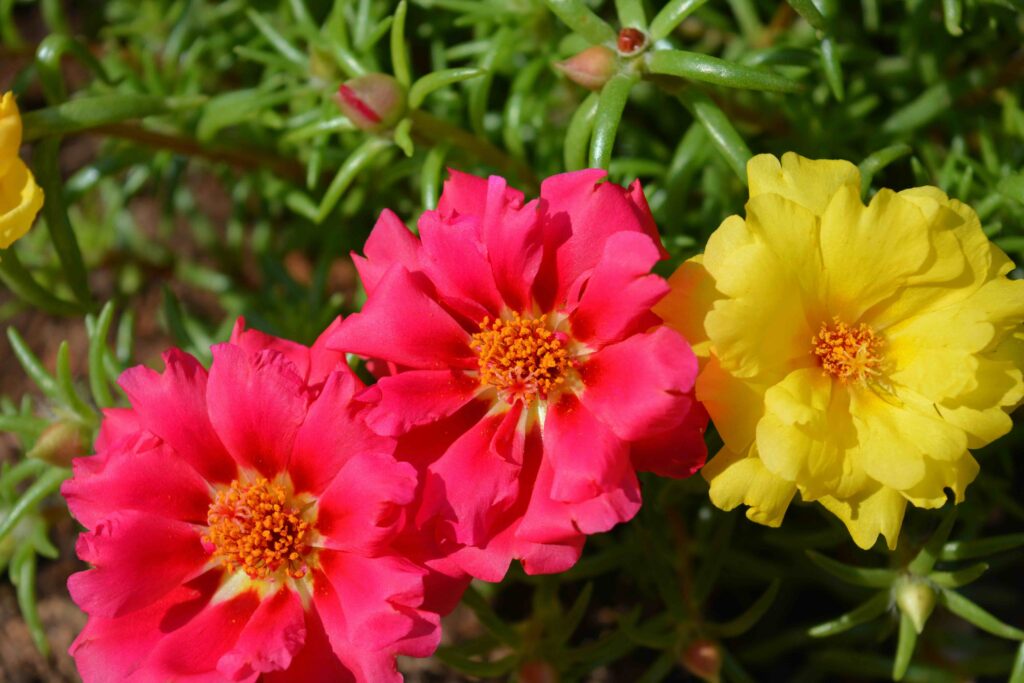

Australia’s botanical landscape is bursting with powerful plants that have been used for centuries in traditional medicine. From the nutrient-dense Kakadu plum to the antibacterial tea tree, these native botanicals offer a natural, science-backed approach to skincare. Among them, tea tree (Melaleuca alternifolia) and portulaca (Portulaca oleracea) stand out as potent allies in the fight against acne.
Long before the world caught on to the benefits of these botanicals, Australia’s Indigenous communities were harnessing their healing properties. Traditional bush medicine has always recognised the power of native plants, using them to treat infections, wounds, and inflammatory conditions. Kakadu plum, for example, has been revered for its extraordinary vitamin C content and its ability to protect and heal the skin. Similarly, tea tree (kallara, paiyabaara, yapay and bulam in the Aboriginal languages) and portulaca have earned their place as acne-fighting heroes thanks to their antimicrobial, antifungal, anti-inflammatory, and skin-soothing properties.
If you’ve ever scanned the ingredients list of a natural acne treatment, chances are you’ve seen tea tree oil in the mix. This essential oil, distilled from the leaves of the Australian tea tree, has been a staple in skincare for its ability to kill acne-causing bacteria. Studies have shown that tea tree oil is just as effective as benzoyl peroxide in treating mild to moderate acne, but without the harsh side effects like dryness and irritation or the concerning bacterial resistance. This makes it a perfect choice in the fight against breakouts.
The magic of tea tree lies in its active compounds, particularly terpinen-4-ol, which boasts powerful antimicrobial and anti-inflammatory properties. Unlike synthetic treatments that often strip the skin, low percentages of tea tree oil works with your skin, reducing redness and swelling while keeping breakouts at bay. Tea tree is a hero ingredient in our Carbon Cleanser and Exfoliant Serum, both of which feature in the patent-pending acne improving Breakout System.
Less well-known but equally impressive, portulaca (also called purslane, pigweed, and in Aboriginal lan guage, munyeroo) is an Australian native plant packed with skin-loving nutrients. Rich in antioxidants, omega-3 fatty acids, and vitamins A, C, and E, portulaca is a powerhouse for when it comes to calming the irritated skin that comes with acne.
Acne isn’t just about bacteria—it’s also about inflammation. That’s where portulaca shines. It helps to soothe redness, reduce swelling, and support the skin’s natural barrier. This means it not only helps treat existing breakouts but also prevents new ones from forming. Plus, its high mucilage content makes it incredibly hydrating. Portulaca is found in our Breakout System with its Exfoliant Serum and Vitamin A + B Serum.
While Kakadu plum is best known for its record-breaking vitamin C content—making it a star in brightening (especially for those brown scars left behind from acne), collagen production, and overall skin health—tea tree and portulaca are more specialised in acne care. The three plants, however, share a common thread: they are all deeply rooted in Australia’s medicinal plant heritage and offer natural, effective skincare solutions.
As the world shifts towards more sustainable and natural skincare solutions, Australian botanicals are having their moment in the spotlight and it looks like it will be more than temporary. With a history of efficacy and a deep connection to the land, tea tree and portulaca are current examples of the perfect blend of tradition and science for acne treatment.